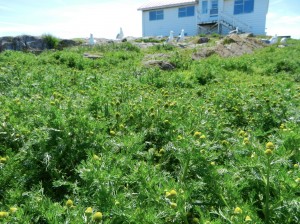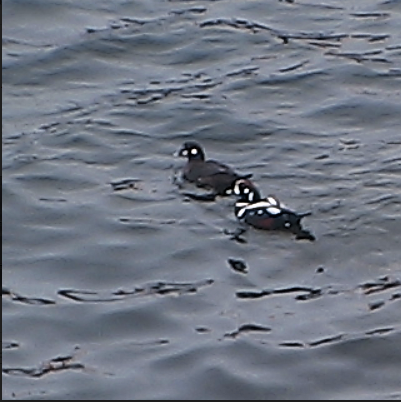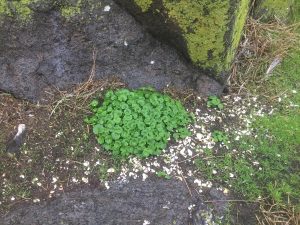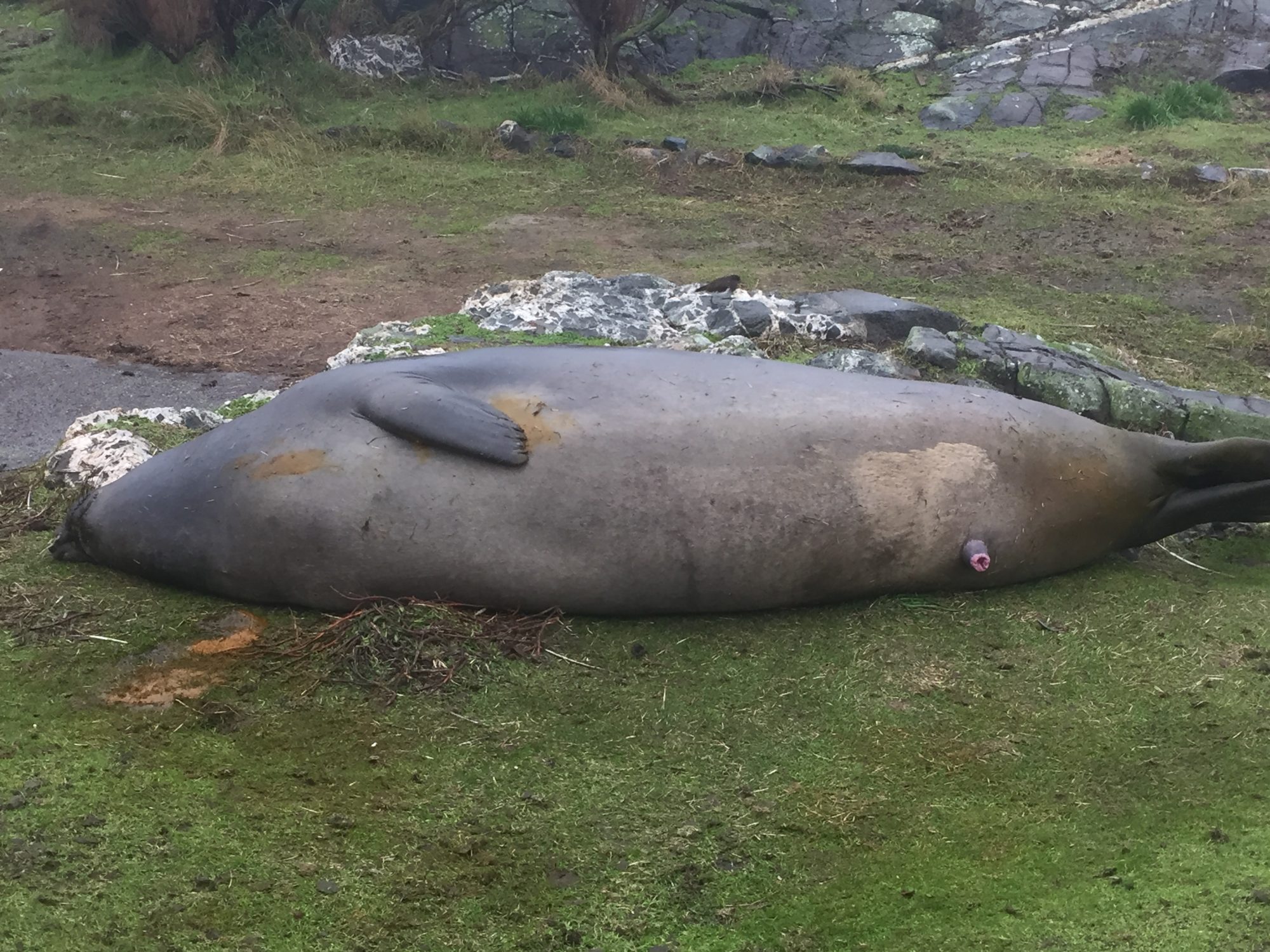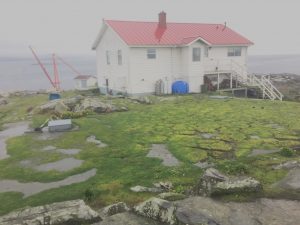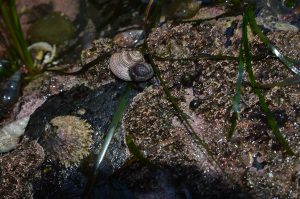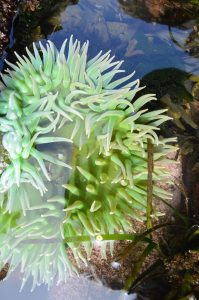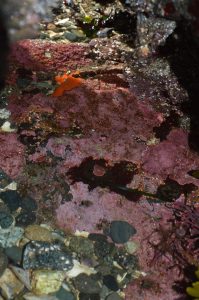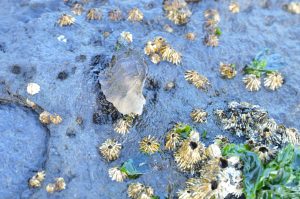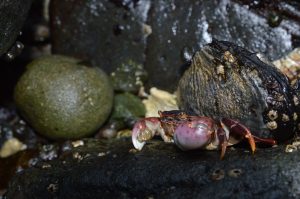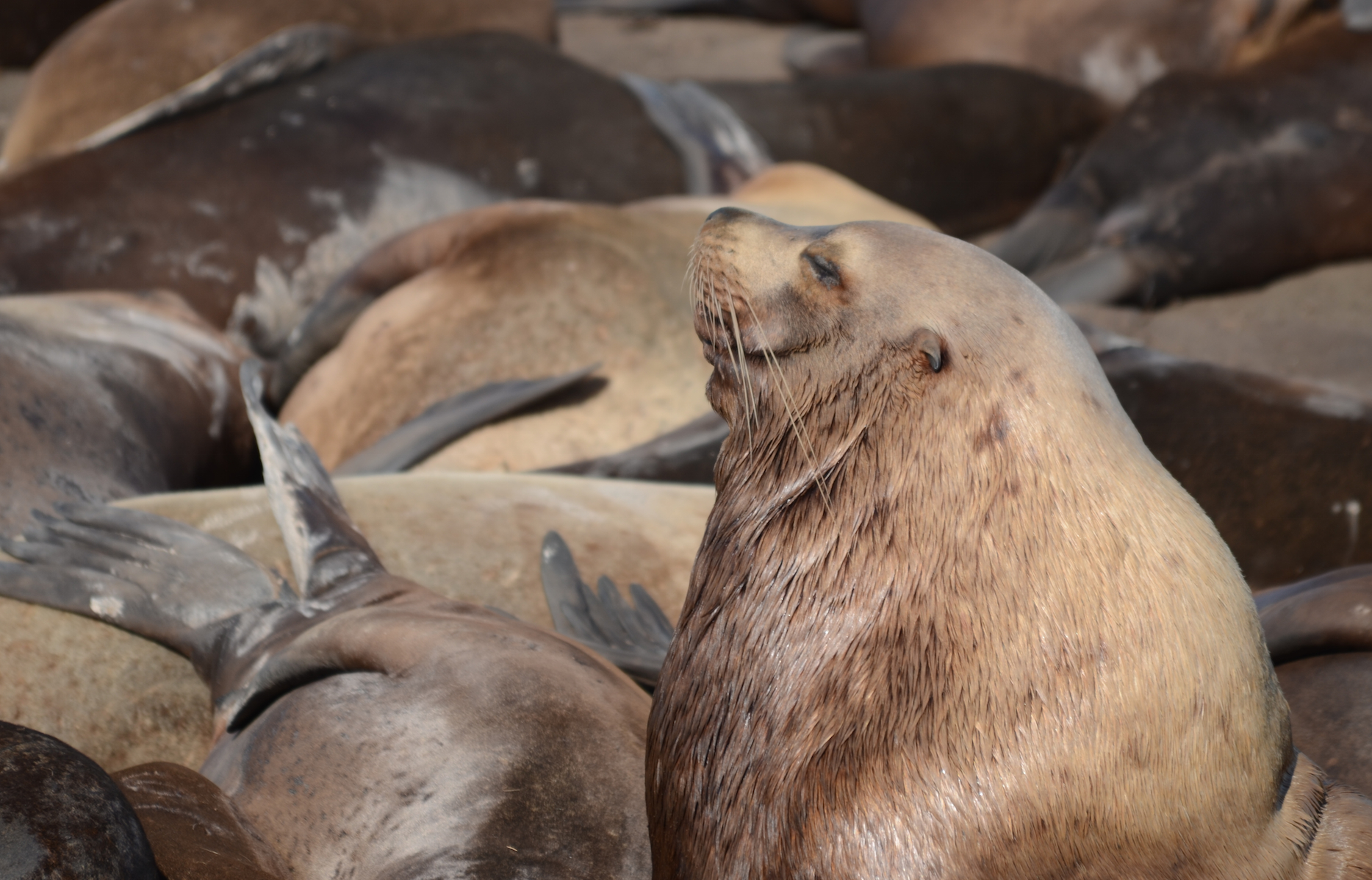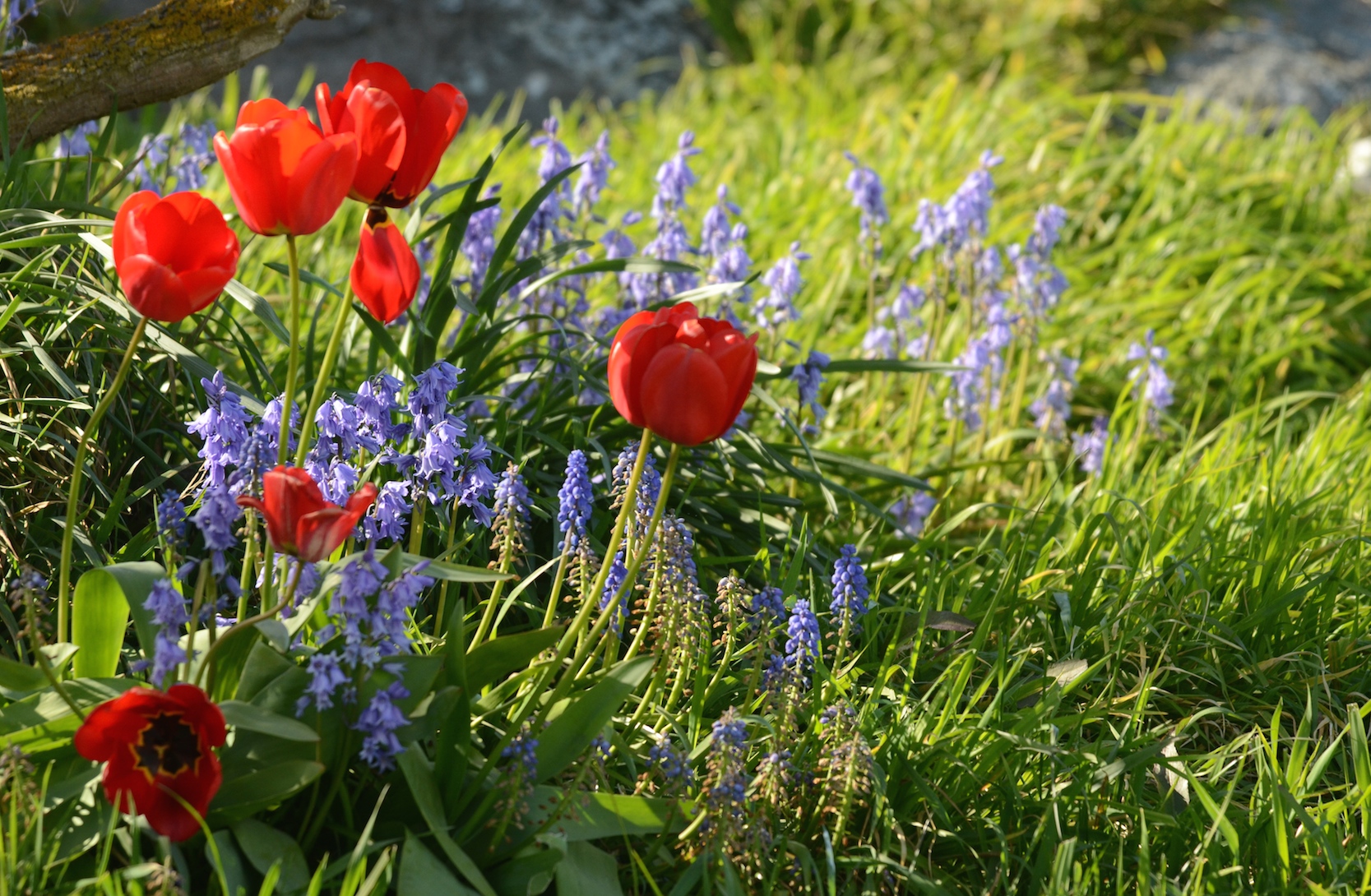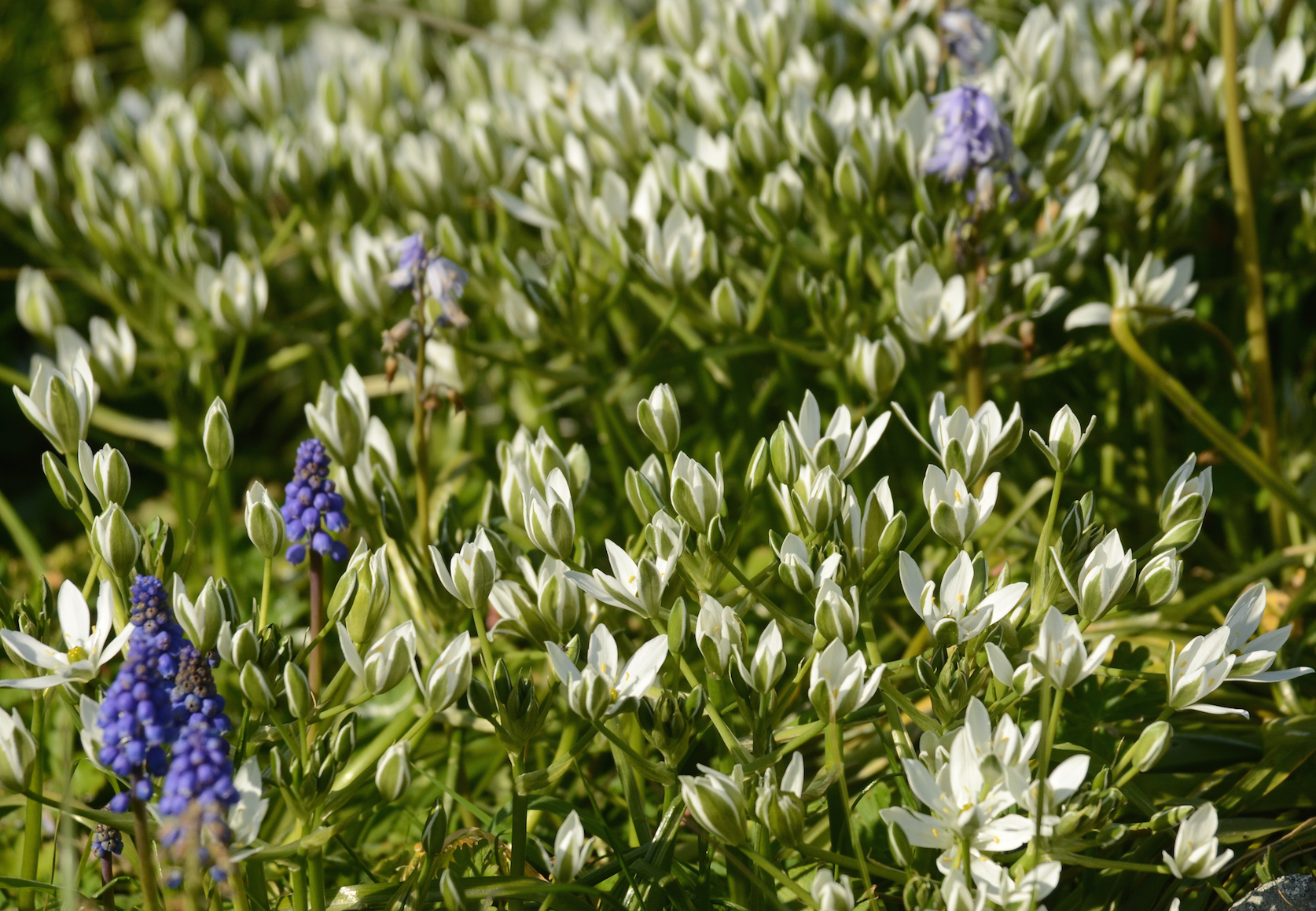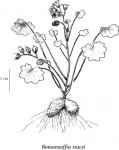The wind blew steadily 25 to 30 knots from the west today, all day. The morning was relatively calm on the lee side but by early evening it was really rough all around Race Rocks. Cloudy morning skies gave way to a sun-dominated mix, of sun and clouds in the afternoon. There was no precipitation in spite of the clouds. Remarkably, the total annual rainfall here to date is ~22 cm, not much. The barometer climbed back up to 1016 hPA., before starting another little slide. The forecast is calling for sunshine with increasing cloud and continuing strong westerlies.
No vessels were observed in the Ecological Reserve during the day today. One whale watching vessel was observed working in the Reserve just at sunset.
Ecological happenings are all in motion and continue on the path that has been described over the last few days. The bull kelp growth may be slowing as evidenced by some epiphytic growth showing on a very small percentage of the “plants”.
These algae are super carbon fixers and not only crank out food, they also grow so thickly that they shelter the Sea Otter and today I saw a small Harbour Seal actually climbing out of the water onto the bull kelp. It is slippery stuff so I was surprised when I looked a few hours later: it was still there and had managed to dry off the upper part of its body while hauling on bull kelp.

Bull kelp is still actively growing.
I realized today that the Harbour Seals, of which there are a lot more (225 to 250) than Northern Elephant Seals (maximum count 35), may have had the short end of the stick when it comes to mentions in the Log entries. Maybe it is because the elephant seals are up close and personal and not bothered by our presence. Maybe it is because it has been such an priviledge to get to know the elephant seals and their diverse personalities and behaviours. The Harbour Seals are further away and hard to tell apart as individuals. An adult Bald Eagle was very interested in the Harbour Seals today and although it is early for inside waters, I thought that there might be some pupping activity soon.

Adult Bald Eagle on watch near hauled out Harbour Seals on Turbine Rock.
Chunk and Floyd often sleep together behind the science house. Floyd’s moult is more than two thirds done while Chunk has not even reached a third yet.

Chunk (closest) and Floyd stretched out behind the science house. Chunk is stretching his right fore flipper.
Chunk and Floyd also have their battles and tonight they chose to fight in amongst the nesting gulls, crushing at least one nest and killing an adult that was trying to defend its nest.

Chunk and Floyd go at each other in among the nesting gulls.

Gull versus adult bull elephant seal: seal 1; gull 0.
My favorite bird here continues to be the Black Oystercatcher, there is something about their very spartan nests and their willingness to take on adult Bald Eagles and Ravens that makes me cheer them on. Their looks are pretty great too. The newly hatched chicks are very precocious and can follow parental commands almost immediately. They are so good at remaining perfectly still when “told to” that they are almost impossible to see. Thank goodness for telephoto lenses. I will try to get a photo of the chicks from a distance tomorrow.

Black Oystercatchers are fiercely brave little birds and willing to chase off Ravens and even Bald Eagles. Their nests are entirely comfortless with only pebbles and shells for decoration.
There were no visitors today and chores were routine as I wrap up the last few days of my shift.

 The Race Rocks taxonomy is a collaborative venture originally started with the Biology and Environmental Systems students of Lester Pearson College UWC. It now also has contributions added by Faculty, Staff, Volunteers and Observers on the remote control webcams.
The Race Rocks taxonomy is a collaborative venture originally started with the Biology and Environmental Systems students of Lester Pearson College UWC. It now also has contributions added by Faculty, Staff, Volunteers and Observers on the remote control webcams. 
